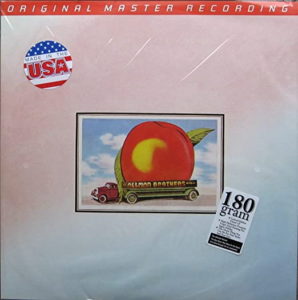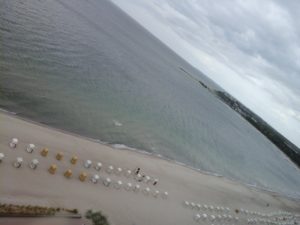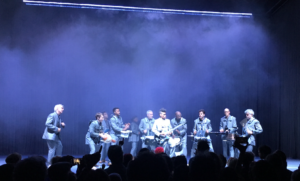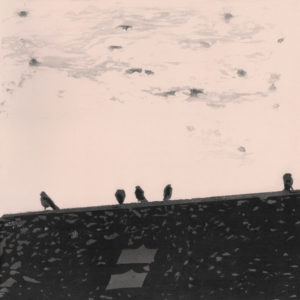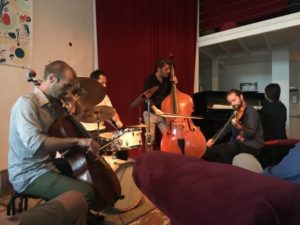
Thomas Strønen is an imaginative drummer, arranger and composer and it’s clear that his artistic intentions are very serious. Even the name of the band is serious: it comes from the first line of the poetic novel, Fugitive Pieces by Ann Michaels. Like the novel, the band too can sometimes be a difficult but rewarding “read.”
With so little European jazz coming to San Francisco (SF Jazz is not going to stage their ECM festival this year), I wasn’t going to miss out on Time is a Blind Guide’s surprising visit to the intimate Red Poppy Art House in San Francisco last night. I really liked their eponymous album a lot. I was hoping they would play some of that material, but alas, (for this listener anyway,) almost the entire show was culled from the new album Lucas. I had listened to Lucus a few times, some of which really spoke to me and some of which was perhaps a tad too loose for my tastes – at times I found myself growing impatient, waiting for something to happen during some of the free sections. But then, that might say more about me than the music.
Seeing these great players live however, was a different story. The band started out with a long, free piece that had character and gravitas-and was quite the opposite of treading musical waters: lots of droning strings, no-pulse drumming and virtuoso bass bowing by Mats Ellertson, who I had seen perform in Tord Gustavsen’s quartet (with Tore Brunborg), as well as admired on Mathias Eick’s last album Ravensburg.
Although I’m not as familiar with the new material, It appears the balance of improvised music in relation to composed music is more equal on this release, making the live performance very compelling, as the group is given a lot more freedom to explore.
The violinist, Håkon Aase, was also familiar to me from his performances on both Mathias Eick’s Midwest as well as Ravensburg (one of my picks for 2018’s best releases). He’s a very eclectic player who obviously has the classical training but sounds very folky at times, using drone strings whilst playing melodies above them. One can also detect a middle eastern interest. He was no slouch in the more avant garde pieces, whether playing ensemble parts or improvising freely. At times he played arpeggios on both violin and hardanger at once. He also doubled occasionally as a hand drummer.
The cellist is not the one on the album and I didn’t catch his name. He was more than up to the task, but didn’t stand out as much as Hakon did. Pianist Ayuma Tanaka played a somewhat austere role in the proceedings to the point of being somewhat underutilized, and was only given one solo spot in which she played exceedingly sparingly – nothing like the stretching out she did on the first album. Also, there were times when the Pleyel upright wasn’t up to the task and was nearly drowned out by the rest of the band.
One of the most enticing aspects of this group is that they are all obviously virtuosos, but rarely show off their prodigious chops. I suspect this is an aesthetic choice on the part of Strønen and it pays off – there was a muted, suspended feeling most of the performance, the music rarely rising above a quiet whisper.
It’s no small thing to play drums with unmiked strings and piano and still allow everything to be heard. Strønen’s performance was a perfect balancing act that few drummers could pull off. Occasionally, he put down the brushes and picked up his sticks to let loose the raw power that he kept contained most of the evening. In those moments, the band rose to a polite roar and the room filled with the clamor of wild, albeit somewhat restrained freedom.
It was a small room and the group played it well. The audience of around 30 people were very appreciative, and afterwards, many lingered to talk with the musicians who happily signed Lps and cds. An evening of quiet rapture.
